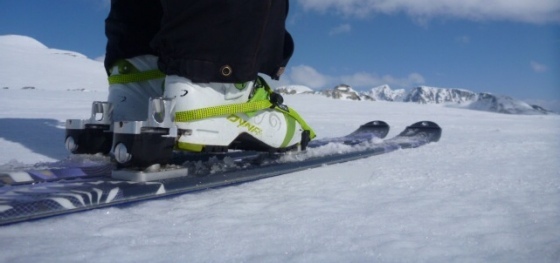Plum Bindings and Ramp Angle
18th May 2013

Photo credit: Tim Burton Photography
My touring kit is now the closest it has ever felt to like being on my alpine set up. That's saying something. It's been a long time getting it right, sometimes an expensive trial and error process, but we've finally got there. And a large part of that is thanks to Plum.
Last season I started using Dynafit TLT ski boots. I loved them but something wasn't quite right. When I stepped into my bindings it felt like I was wearing high heels. I'm sure people who wear high heels frequently can balance in them well, but I find it strenuous. Not only that but my knees hurt.
So I got the ruler out. The ramp angle (the difference in height between the toe piece and the heel piece) was significantly greater than on my alpine bindings and my Marker Tour F12. For somebody like me with small feet this problem is amplified. No wonder it felt like I was on high heels. Then the search began for a light weight touring binding with a ramp angle similar to what I was used to on my other set-ups.
A friend suggested going down to the Plum factory in Cluses. We were met by Marc who understood exactly the problem that I was having (even with an explanation in my limited French). He said he could put a plate under the toe piece of the Plum Guide that would give me a set-up with a much reduced ramp angle. The added bonus of this is that this is the plate that the brake they are releasing next year will fit on to. Yes, that's correct; the brake is going on the front of the binding!
Having skied on them for a few weeks in Norway, these bindings mean that my Dynafit TLT's and K2 Talkbacks are now linked together by a fantastic piece of kit. It's a wonderful feeling to be able to ski off a peak and have my feet flat. The best bit about these bindings is knowing that the factory is just down the road and that you'll always be given a warm welcome.

